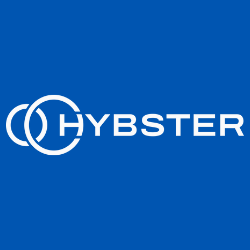3D printing has a number of significant advantages over traditional machining and the injection molding, en prototypage rapide.
However, like any production method, 3D printing has its drawbacks. As always, It is important to consider the intended application of your part, as this can determine whether 3D printing or traditional manufacturing methods are right for you.
Below, we have compiled a list of advantages and disadvantages of 3D printing and we've discussed it briefly to help you determine if 3D printing is the best solution for manufacturing your parts.
AVANTAGES ET INCONVENIENTS DE L’IMPRESSION 3D
Benefits
Freedom of design
3D printing allows the production of complex geometries that machining and injection moulding are difficult or simply unable to do so.
Traditional methods often do not allow for complex geometry, as some areas are impossible to machine or demould.
However, with 3D printingThe additive process and the use of support materials allow for any type of geometry. This can allow you to simplify your designs, replacing an assembly with a single 3D printed component.
Speed
With 3D printingIn addition, prototypes can be produced in just a few hours. This greatly increases the speed of the design process, as parts can be available within hours or a day and the next iteration can begin.
In addition, with each design change, a new prototype can be made quickly and cheaply using 3D printing.
Waste reduction
3D printing is an additive manufacturing process.
This means that only the material needed to produce the part is used.
Unlike machining which cuts large amounts of non-recyclable material to produce the part, 3D printing produces much less waste. Therefore, it reduces the material cost of production because you only pay for the material you need.
Disadvantages
Materials
3D printing is not yet versatile enough to work with most materials.
3D printing mainly produces parts in a limited selection of plastics with varying mechanical properties.
In addition, most 3D printing materials are not suitable for food contact.
With additive manufacturing, parts are printed in layers that adhere to each other during the process.
Unfortunately, this means that under certain stresses or part orientation, the layers can separate, causing the part to break. For FDM, this is a bigger problem than for other 3D printing technologies. It may be more advantageous to use the injection molding because it produces homogeneous parts.
Limited product size
The vast majority of 3D printers, including industrial grade printers, have small manufacturing enclosures, at least compared to machining centers and injection molding machines.
Any part larger than the manufacturing chamber of a printer must be divided into sections and glued together in post processing. This can increase costs as it will take longer to print the part and will require manual labor.
Post treatment
Post-processing is not limited to large parts. In fact, most 3D parts require post-processing cleaning to remove the support material and smooth the surface finish.
This may include water jet cleaning, sanding, chemical soaking and rinsing, air or heat drying, assembly, etc.
The amount of post-processing required for a part ultimately depends on the 3D printing technology used for production, the size of the part and its intended application. Regardless, it is important to remember that while 3D printing can produce parts quickly, post-processing can be slowed down.
The use of 3D printing in innovative and experimental scenarios is frequently shown in the media, but the reality is that the majority of today's plastic parts are made by injection molding. This choice is understandable given the way the process allows for quality control, cost control and the manufacture of complex assemblies, by injection moulding or bi-material injection with tight tolerances.

